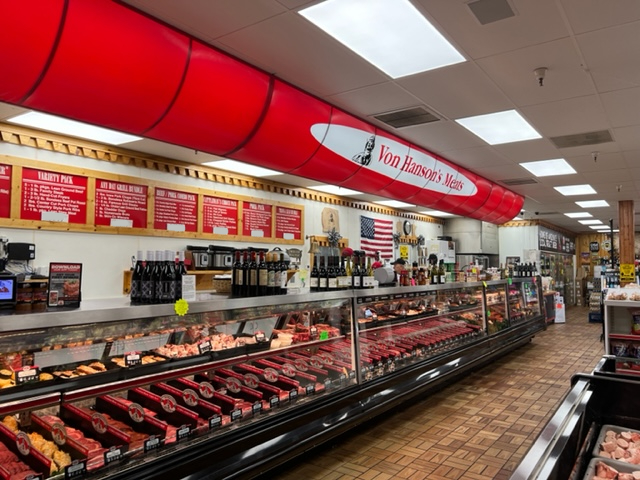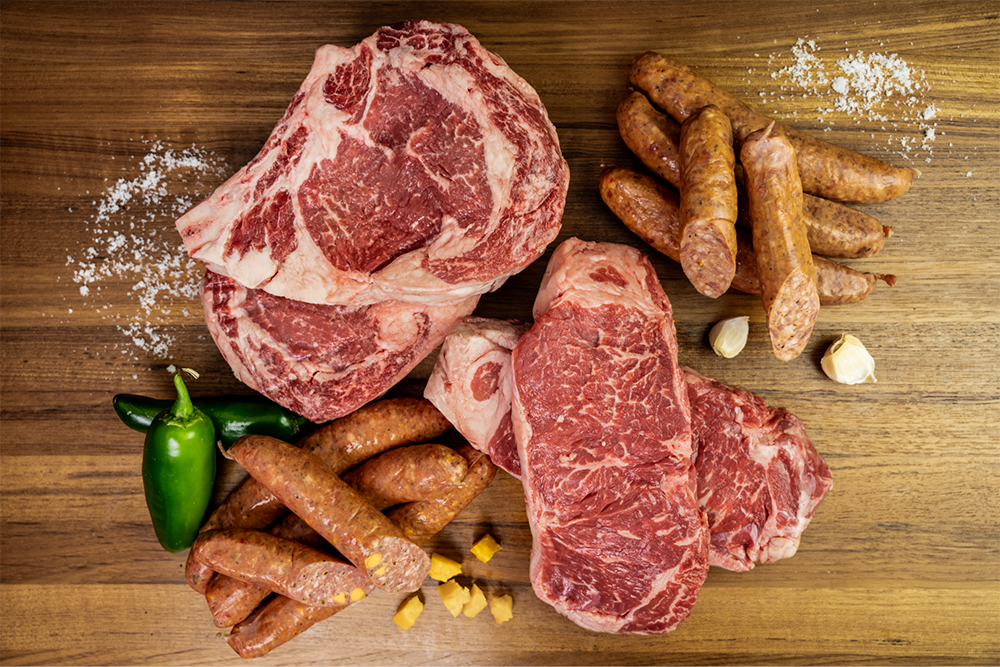Bagley Farms Meat Market Edwardsville IL: Your Best Destination for Local Meat Option
Bagley Farms Meat Market Edwardsville IL: Your Best Destination for Local Meat Option
Blog Article
Reveal the Art of the Butcher's Cut in a Modern Meat Market
In the ever-evolving landscape of contemporary meat markets, the butcher's cut has actually transcended its standard origins, merging olden craftsmanship with modern methods. What truly sets the modern-day butcher apart is their capacity to build a much deeper link between consumers and the beginnings of their meat.
Development of Butchery Techniques

The mid-20th century saw butchery techniques additionally improved by clinical insights right into muscular tissue biology and meat aging, enhancing both tenderness and preference. Innovations like vacuum cleaner product packaging and refrigeration prolonged product shelf-life, enabling butchers to branch out offerings and enhance quality control. This duration additionally marked the rise of customized equipment, such as band saws and meat slicers, which boosted precision and performance in meat handling.
The 21st century has actually presented electronic modern technology right into the butchery realm. Digital systems now aid in monitoring animal provenance and optimizing cuts to fulfill details customer choices. Additionally, a resurgence in artisanal butchery has arised, mixing typical abilities with contemporary expertise to satisfy customers seeking moral and lasting meat options. This development emphasizes a vibrant interaction between practice and advancement, meeting contemporary needs while preserving the craft's heritage.

Understanding Meat Cuts

Understanding the ins and outs of meat cuts is important for both butchers and customers seeking top quality and value. Each cut originates from a different part of the animal, giving distinct flavors, structures, and food preparation methods. Proficiency of these differences not only enhances culinary experiences yet likewise makes best use of the utility of each carcass. For butchers, specific cuts mirror skill and respect for the craft, making sure minimal waste and ideal return.
The key classifications of meat cuts consist of primitive, sub-primal, and retail cuts. Butchers after that damage these down better into sub-primal cuts, before ultimately generating retail cuts readily available to customers, like ribeye or tenderloin.
Comprehending muscular tissue structure is important; muscular tissues utilized more regularly by the pet tend to be harder and are best fit for slow-moving cooking methods, while less-used muscle mass, like those located in the loin, are a lot more tender and Read More Here perfect for barbecuing or roasting. Familiarity with these differences encourages consumers to make enlightened options, boosting their culinary undertakings.
Picking Quality Meat
Picking the best meat involves even more than just choosing an aesthetically attractive piece from the display. The art of picking top quality meat calls for a critical eye and knowledge of certain qualities that indicate freshness and excellence.
Secondly, think about the marbling, which refers to the white flecks of fat within the muscle. Appropriate marbling is an essential indication of tenderness and flavor, as it thaws throughout food preparation, enhancing the meat's juiciness. Remember, higher marbling often correlates with superior top quality cuts, such as USDA Prime.
Structure is one more critical factor; meat must feel solid to the touch, not slimed or extremely soft. Furthermore, be mindful of the scent. Fresh meat ought to have a clean, neutral odor, without any type of sour or off-putting odors.
Pairing Cuts With Food Preparation Techniques
Successfully coupling cuts of meat with the ideal cooking approaches is crucial for achieving ideal taste and structure. These methods boost the meat's all-natural flavors and make certain a juicy coating.
Alternatively, harder cuts like brisket and chuck roast are rich in collagen, which breaks down into gelatin when prepared slowly. These cuts are perfect for braising or slow-moving roasting, allowing the meat to tenderize in time and create deep, complicated flavors. Cuts such as brief ribs and pork shoulder get on well with slow-cooking approaches, where extended cooking times transform their robust textures right into delicious meals.
Lamb shanks and oxtail, which require long term food preparation to soften, are perfect prospects for cooking or slow-moving simmering. These approaches coax out rich, passionate tastes while preserving dampness. By comprehending the unique features of each cut, cooks and home chefs next page alike can boost their cooking developments, making certain each recipe is both satisfying and memorable.
The Butcher's Role Today
Browsing the advancing landscape of the modern meat market, the butcher's role today expands past plain preparation of cuts. Contemporary butchers are cooking craftsmens, teachers, and supporters for lasting methods.
Along with crafting view it precise cuts, butchers now involve directly with consumers, offering cooking advice and customizing options to suit specific demands and choices. Their know-how in meat aging, marbling, and taste profiles encourages consumers to make informed decisions, improving their cooking experiences. This customized service exhibits the butcher's progressing role as a trusted expert in the cooking area.
Furthermore, butchers are pivotal in reducing waste, using whole pets to develop varied products such as sausages and supplies - bagley farms meat market edwardsville il. This comprehensive method not just values the animal however additionally aligns with contemporary sustainability goals. This way, the contemporary butcher personifies both tradition and technology, adapting to an ever-changing market while protecting the creativity and stability of their craft

Verdict
Mastery in understanding varied meat cuts and quality indicators encourages butchers to supply enlightened suggestions, straightening certain cuts with ideal food preparation approaches. By recognizing historic methods while welcoming modern demands, the butcher's role stays essential in today's advanced meat market.
Report this page